Welcome to the delightful world of indoor gardening, where a splash of nature’s beauty can transform any room into a vibrant oasis. Whether you’re just beginning your journey with houseplants or have a seasoned green thumb, this guide to the “Top 10 Flowering Houseplants for Any Room” is your ticket to cultivating joy and color indoors.
Imagine the satisfaction of watching delicate blooms unfurl, adding not just visual appeal but also a sense of accomplishment to your home. This carefully curated list offers invaluable insights into choosing the right plants, ensuring that you can enjoy lush, flowering greenery without the guesswork. Dive in, and you’ll discover that nurturing these houseplants is simpler than you think, with rewards that extend beyond aesthetics to a sense of personal achievement and well-being.
African Violet (Saintpaulia ionantha)
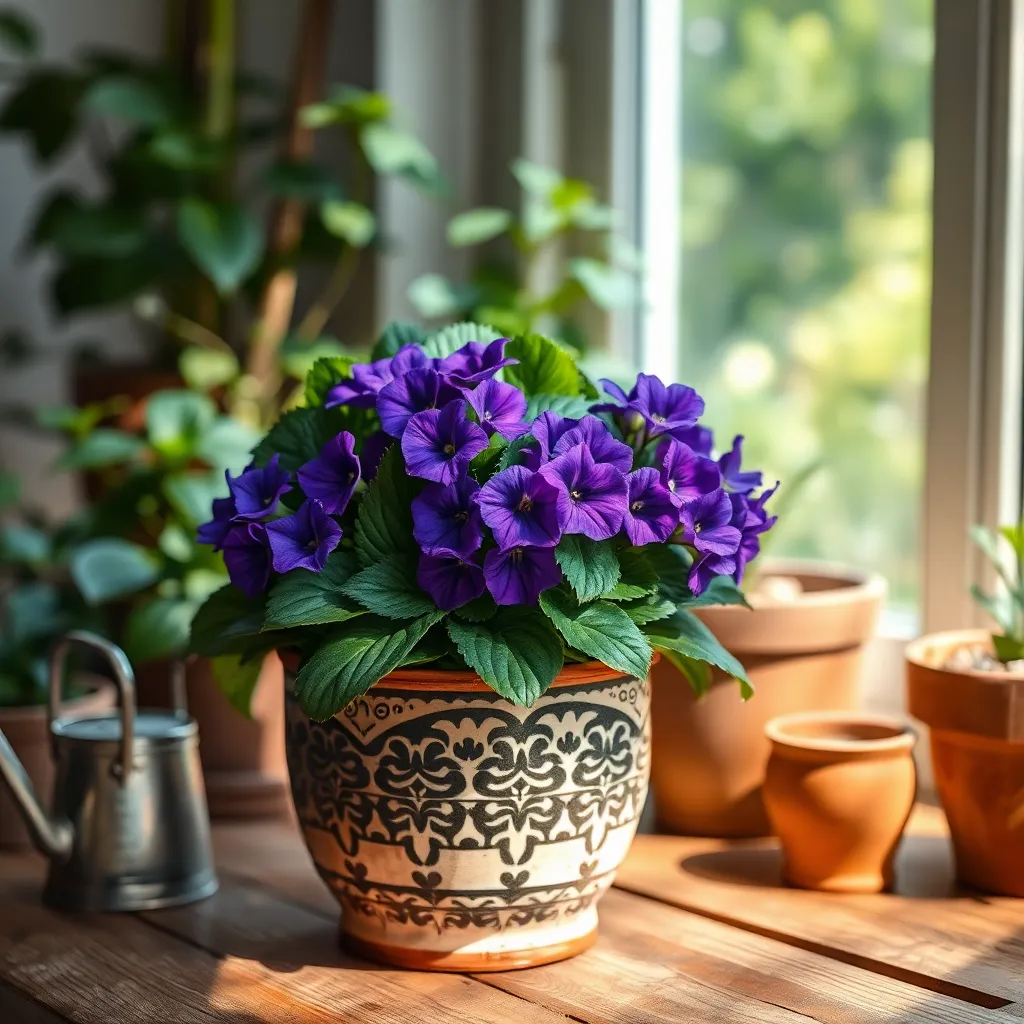
African Violets (Saintpaulia ionantha) are beloved for their vibrant blooms and compact size, making them perfect for any room. To thrive indoors, they require bright, indirect light, ideally from a north or east-facing window.
When it comes to watering, these plants prefer their soil to be kept consistently moist but not waterlogged. Water from the bottom to avoid wetting the leaves, which can cause spots or rot.
Soil choice is crucial for African Violets, as they need a well-draining potting mix. Consider using a specialized African Violet potting soil or add perlite to improve drainage in regular soil.
For those looking to enhance their plant’s growth, fertilize with a balanced, water-soluble fertilizer every 4-6 weeks. Pinch off spent blooms to encourage continuous flowering and keep the plant tidy.
Peace Lily (Spathiphyllum wallisii)
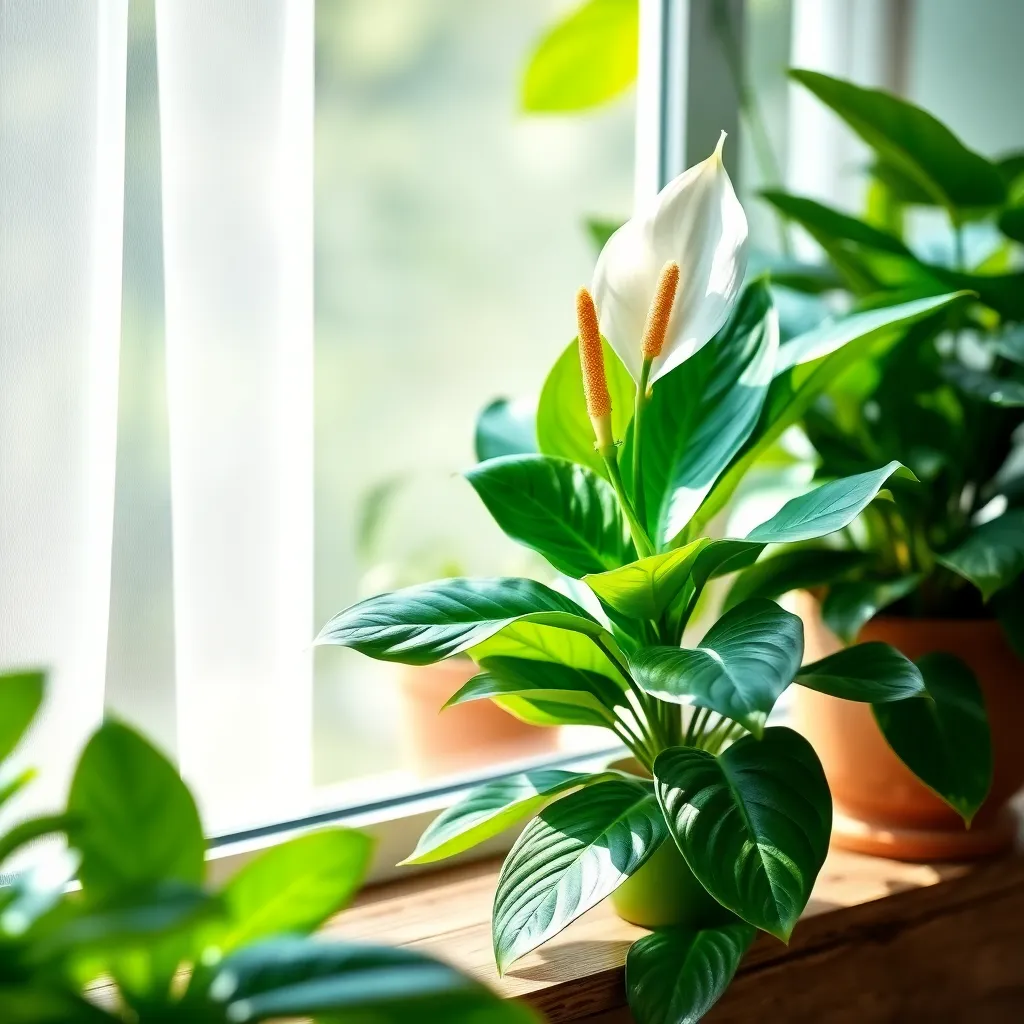
The Peace Lily, or Spathiphyllum wallisii, is a favorite among indoor gardeners due to its lush foliage and elegant white blooms. Known for its ability to thrive in low light, this plant is perfect for spaces where sunlight is limited.
To ensure your Peace Lily flourishes, place it in a spot that receives indirect light and water it when the top inch of soil feels dry. It’s important to use a well-draining potting mix, such as one containing peat moss, to prevent root rot.
Regular misting can help maintain the humidity levels that Peace Lilies crave, especially in dry indoor environments. Every few months, consider wiping the leaves with a damp cloth to remove dust and keep them looking vibrant.
Advanced gardeners can encourage more blooms by feeding their Peace Lily with a balanced, water-soluble fertilizer every 6 to 8 weeks during the growing season. To avoid over-fertilization, always follow the package instructions and dilute the fertilizer to half strength.
Jasmine (Jasminum polyanthum)
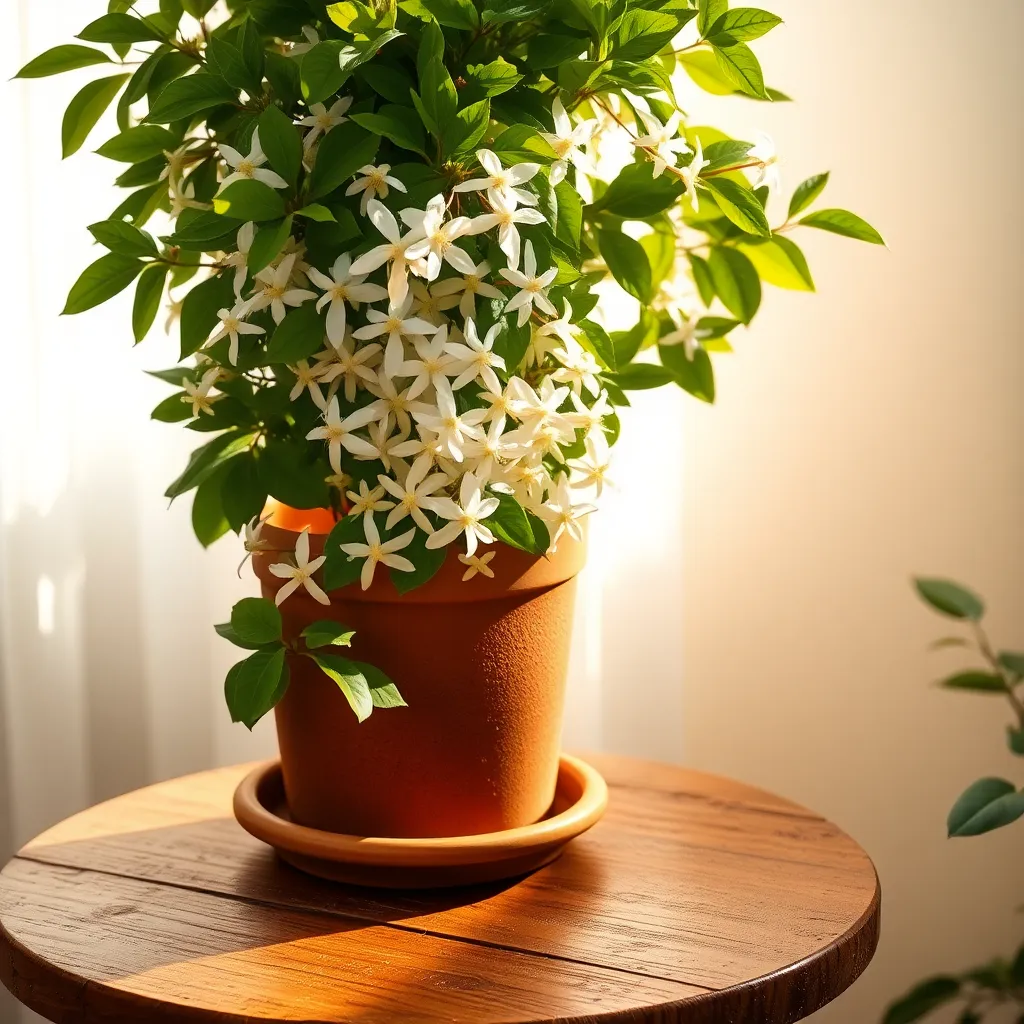
Jasmine (Jasminum polyanthum) is a stunning flowering plant known for its delicate, fragrant blooms. This plant thrives in bright, indirect light, making it a perfect choice for a sunny window in any room of your home.
To keep your jasmine healthy, ensure it is planted in well-draining soil, such as a mix that includes peat and perlite. Water your jasmine regularly during the growing season, but allow the top inch of soil to dry out between waterings to prevent root rot.
While beginners will appreciate the resilience of jasmine, more experienced gardeners can experiment with training the plant onto a trellis for a dramatic display. Regularly trim the vines to maintain your desired shape and promote bushier growth, which will result in more abundant blooms.
In addition to basic care, jasmine benefits from a monthly feeding with a balanced, water-soluble fertilizer during the spring and summer. This will support vigorous growth and enhance the plant’s natural fragrance, making it a delightful addition to any indoor garden.
Anthurium (Anthurium andraeanum)
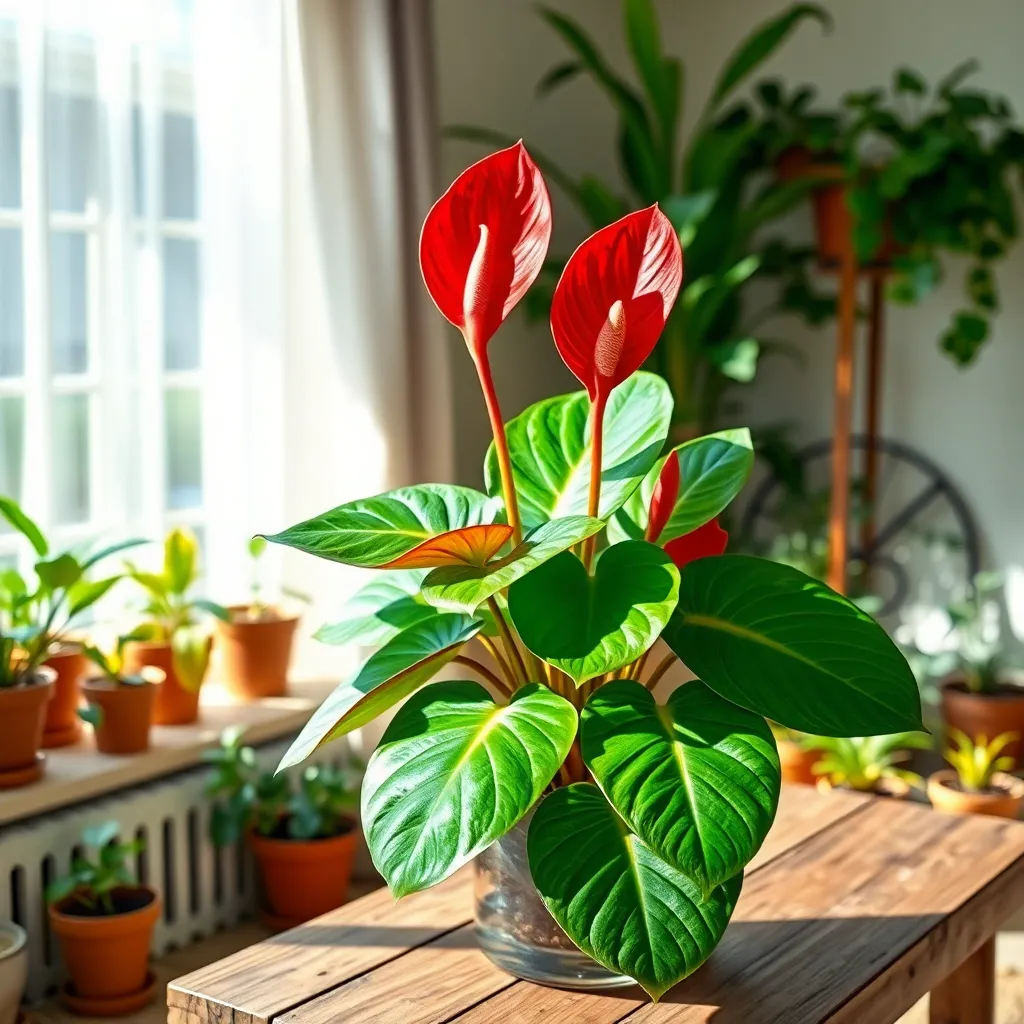
Anthurium (Anthurium andraeanum), commonly known as the Flamingo Flower, is a striking houseplant known for its vibrant, waxy spathes and lush foliage. To thrive, this tropical plant requires a warm, humid environment, which can be easily achieved with regular misting or the use of a humidifier.
Place your Anthurium in a location that receives bright, indirect light, as direct sunlight can scorch its leaves. If you’re in a low-light area, consider using a grow light to supplement natural light and keep the plant healthy.
For soil, choose a well-draining potting mix rich in organic matter; a combination of orchid soil and peat moss works well. Water your Anthurium when the top inch of soil feels dry, ensuring that excess water drains away to prevent root rot.
Fertilize every six to eight weeks during the growing season with a balanced, water-soluble fertilizer to encourage robust blooms. For advanced care, you can prune spent flowers and yellowing leaves to maintain the plant’s aesthetic and health.
Bromeliad (Guzmania lingulata)
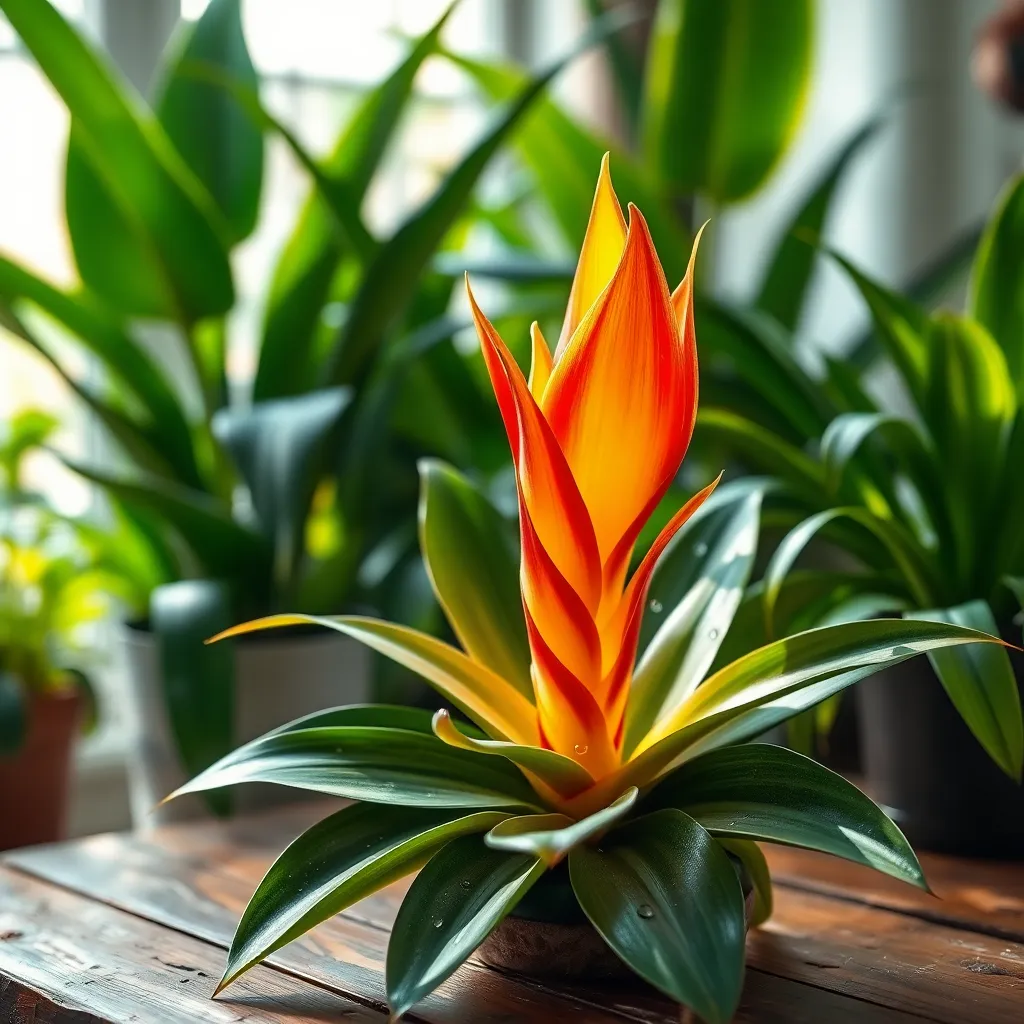
The Bromeliad, specifically Guzmania lingulata, is a striking houseplant known for its vibrant bracts and easy care requirements. Native to the tropical forests of Central and South America, it thrives indoors when provided with the right conditions.
To cultivate a healthy Bromeliad, ensure it is placed in bright, indirect light. Direct sunlight can scorch its leaves, so a spot near a window with filtered light is ideal.
These plants prefer high humidity, which can be achieved by misting the leaves regularly or placing the pot on a tray of pebbles with water. It’s important to keep the central cup, or “tank,” filled with water, but ensure the soil remains well-drained to prevent root rot.
For optimal growth, use a potting mix specifically designed for orchids or a blend of peat moss and perlite. This provides the necessary aeration and drainage that Bromeliads require.
During the growing season, feed your Bromeliad monthly with a diluted liquid fertilizer. However, avoid fertilizing the plant directly into the cup, as this can damage the central rosette.
Kalanchoe (Kalanchoe blossfeldiana)
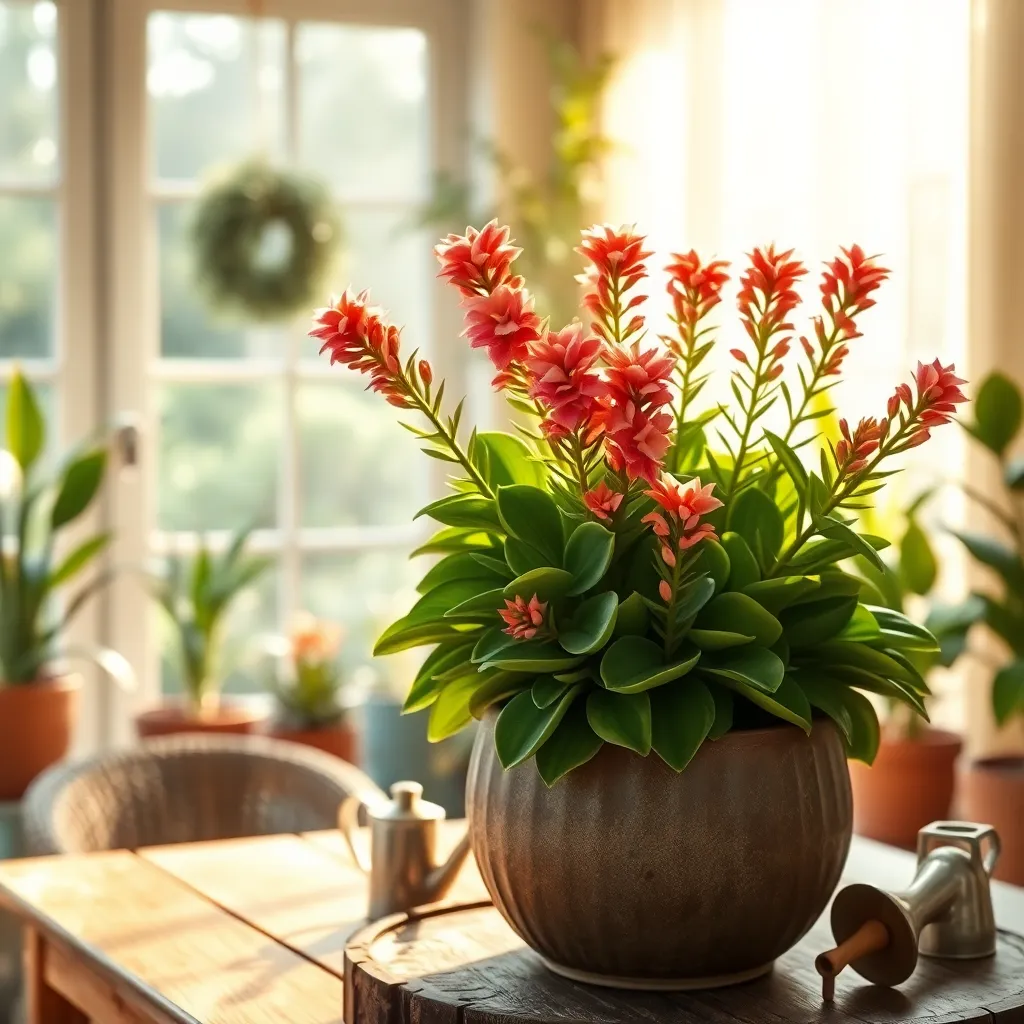
Kalanchoe (Kalanchoe blossfeldiana) is a delightful addition to any indoor space, known for its vibrant clusters of flowers. With the right care, this succulent can bloom for several weeks, making it a top choice for brightening up your home.
To thrive, Kalanchoe needs plenty of indirect sunlight, so place it near a bright window but away from direct rays that might scorch its leaves. Ensure the pot has drainage holes to prevent overwatering, as this plant prefers its soil to dry out between waterings.
Use a well-draining potting mix, such as a cactus or succulent blend, to keep your Kalanchoe healthy. During its growing season, which spans spring and summer, consider feeding it with a balanced, water-soluble fertilizer every month.
Advanced gardeners can experiment with controlling the light exposure to encourage reblooming. By providing 14 hours of darkness each night for about six weeks, you can stimulate a new flowering cycle, rewarding you with another burst of color.
Begonia (Begonia rex-cultorum)
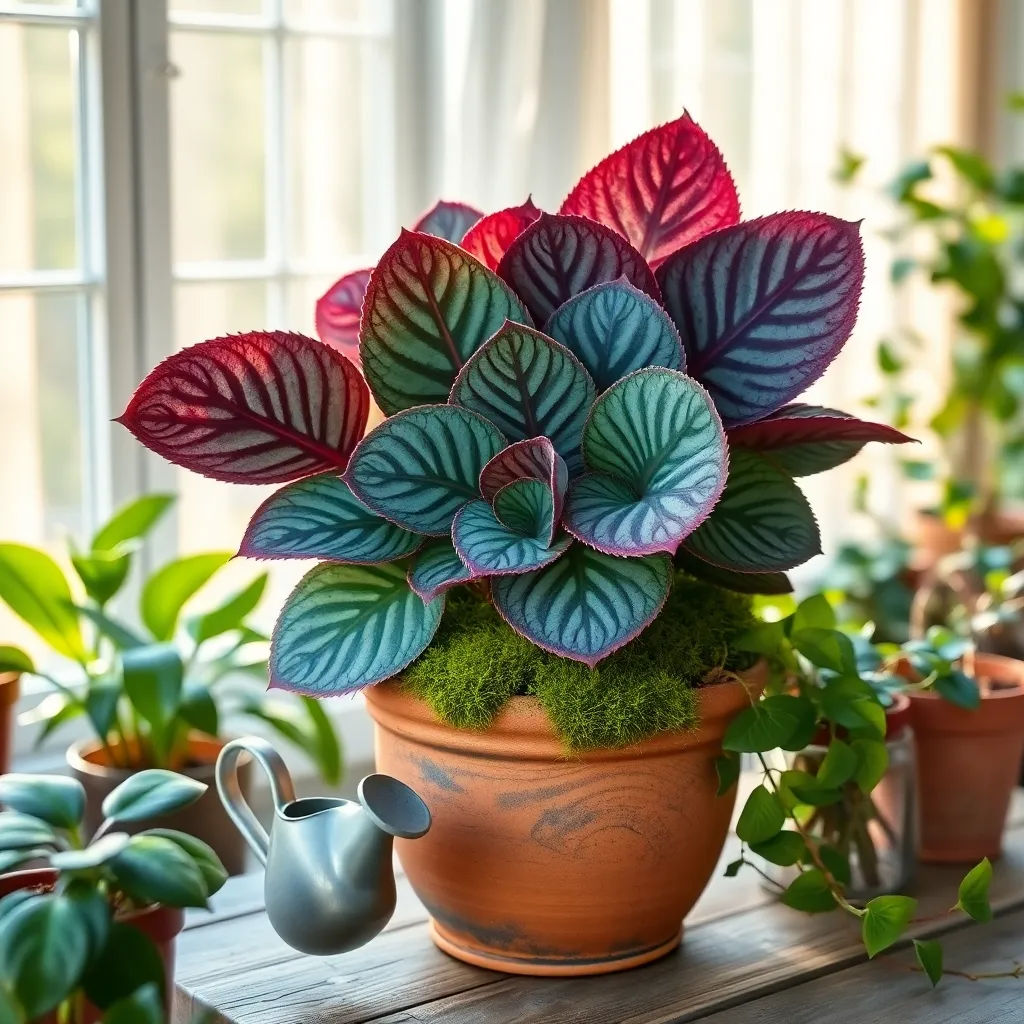
Begonia (Begonia rex-cultorum) is a stunning houseplant known for its vibrant, heart-shaped leaves that come in a variety of colors and patterns. While primarily grown for their foliage, these begonias can occasionally produce subtle flowers, adding an extra layer of beauty to your indoor space.
To thrive, Begonia rex-cultorum requires bright, indirect light, making it perfect for a spot near a window with filtered sunlight. Avoid direct sunlight as it can scorch the leaves, and keep the plant in a humid environment to mimic its natural tropical habitat.
Watering needs to be done carefully; allow the top inch of soil to dry out between waterings to prevent root rot. Using a well-draining potting mix, such as one containing peat moss or perlite, is essential to maintain the proper moisture balance.
Advanced gardeners might consider propagating Begonia rex-cultorum using leaf cuttings. Simply cut a healthy leaf, lay it on moist soil, and secure it with small pins; within a few weeks, new plantlets will begin to form.
Clivia (Clivia miniata)
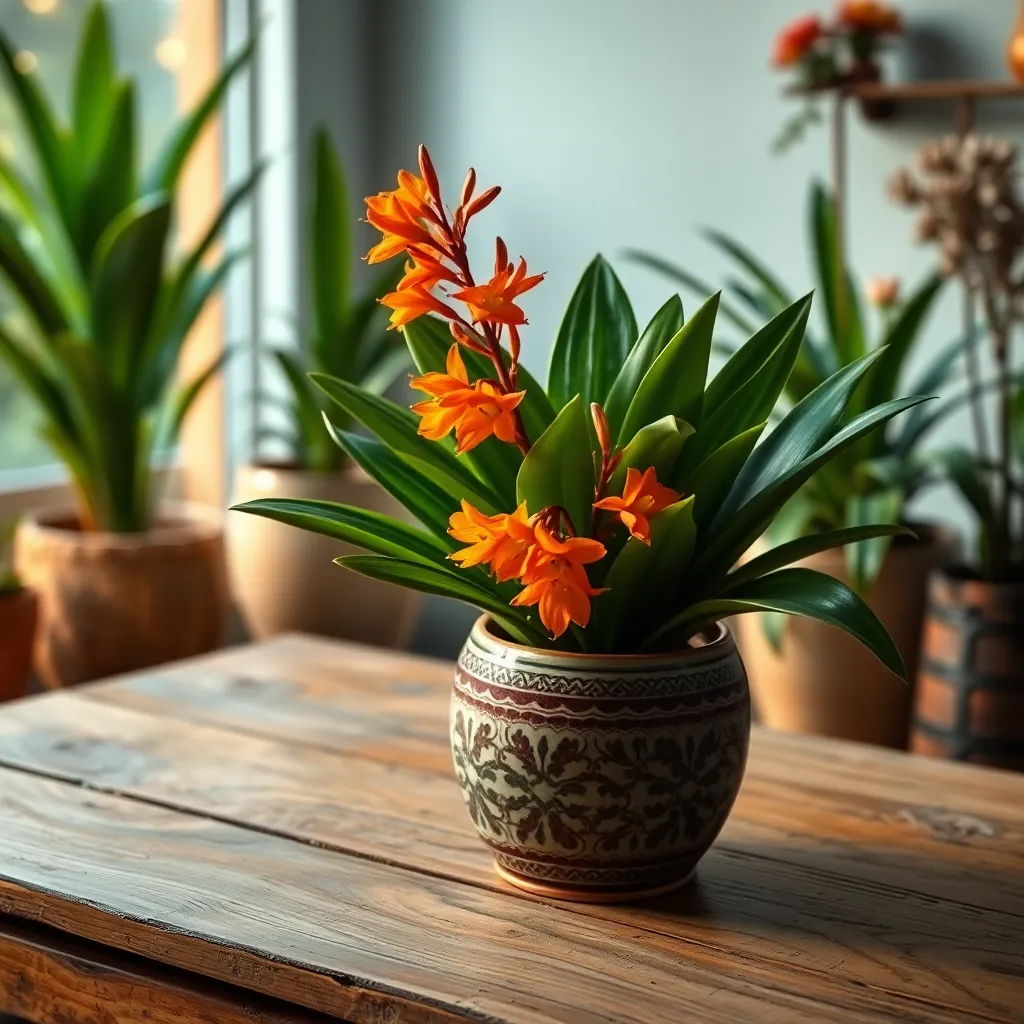
Clivia (Clivia miniata) is an excellent choice for indoor gardeners who desire a splash of color without much effort. These striking plants thrive in bright, indirect light, making them perfect for rooms that receive filtered sunlight throughout the day.
For optimal growth, plant Clivia in a well-draining potting mix, such as a combination of peat and perlite. Ensure the soil remains slightly moist but not waterlogged by allowing the top inch to dry out between waterings.
Fertilize Clivia sparingly, using a balanced liquid fertilizer every two months during the growing season, which typically runs from spring to late summer. During their dormant period in fall and winter, reduce watering and stop fertilization to encourage future blooms.
Advanced gardeners can encourage more robust flowering by providing a cool rest period in winter, ideally around 10°C to 15°C (50°F to 59°F). With attention to these care details, your Clivia will reward you with clusters of vibrant, trumpet-shaped flowers year after year.
Orchid (Phalaenopsis spp.)
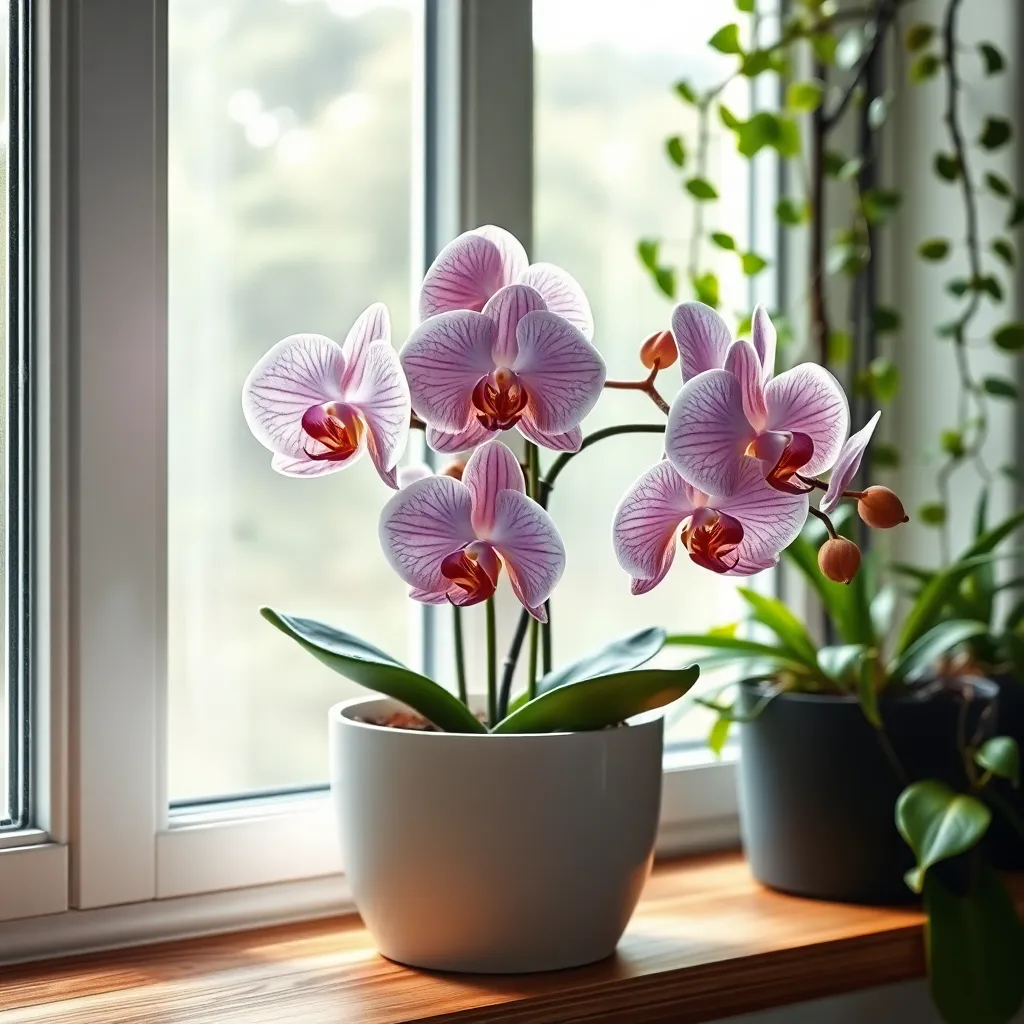
Orchids, specifically Phalaenopsis spp., are a popular choice for indoor gardeners due to their stunning blooms and relative ease of care. They thrive in bright, indirect light, making them perfect for rooms with filtered sunlight or north-facing windows.
To ensure healthy growth, it’s essential to use a well-draining potting mix, typically one formulated for orchids. Watering is crucial: allow the potting mix to dry out between waterings, usually once a week, to prevent root rot.
Humidity is another important factor for orchids, as they naturally grow in tropical environments. You can increase humidity levels by placing the orchid on a tray of pebbles with water or using a humidifier, especially in dry indoor climates.
For those looking to encourage blooming, feed your orchid with a balanced orchid fertilizer every two weeks during the growing season. Advanced growers might also consider repotting every two years to refresh the potting medium and promote healthy root development.
Hibiscus (Hibiscus rosa-sinensis)
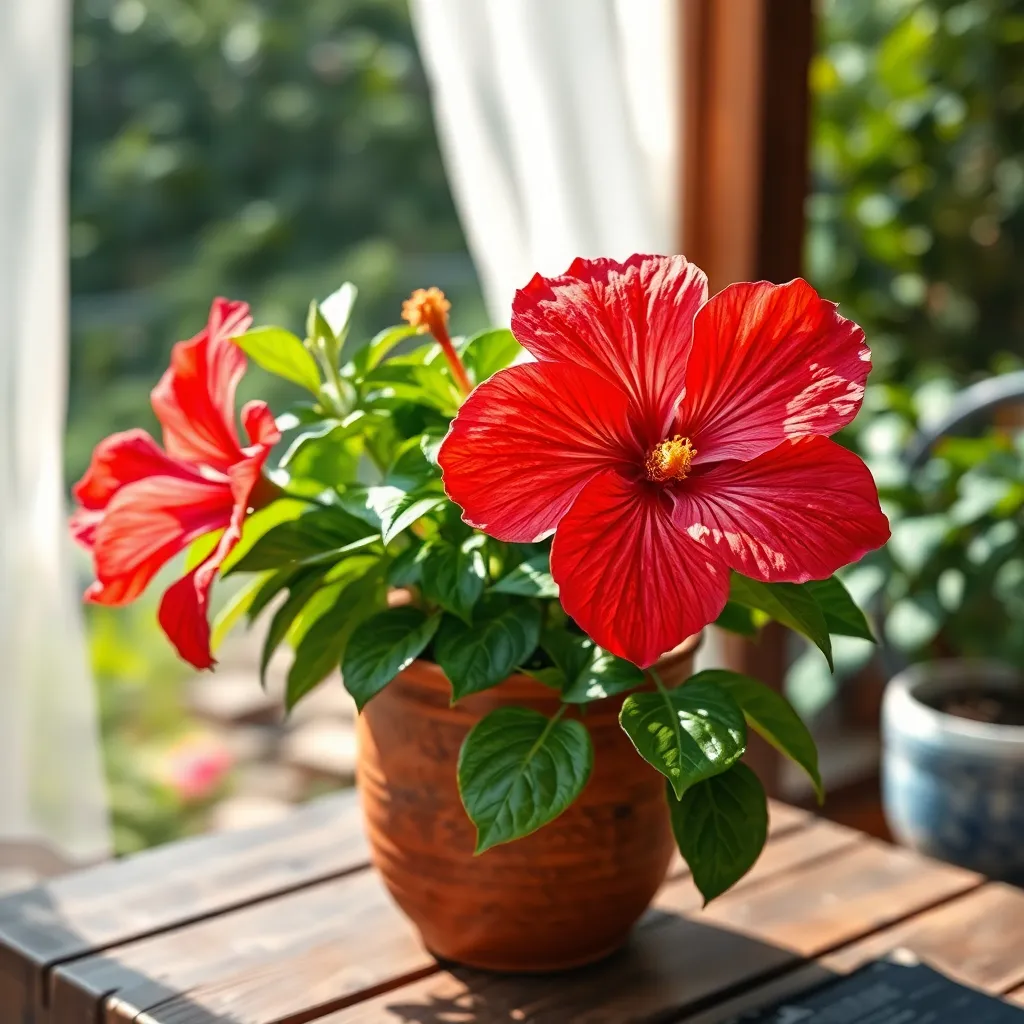
Hibiscus (Hibiscus rosa-sinensis) is a stunning addition to any indoor garden with its large, vibrant blooms. Known for its broad, trumpet-shaped flowers, this tropical beauty can transform any space into a lush, exotic retreat.
To successfully grow hibiscus indoors, provide it with plenty of bright, indirect sunlight by placing it near a south or west-facing window. Consistent light exposure is crucial for bloom production, so consider supplementing with a grow light during darker winter months.
Proper watering is essential for hibiscus care; aim to keep the soil consistently moist but not soggy. Use a well-draining potting mix—such as one containing peat moss and perlite—to prevent root rot and ensure healthy growth.
For those looking to give their hibiscus a boost, feed it with a balanced, water-soluble fertilizer every couple of weeks during the growing season. Pruning in late winter or early spring can also encourage bushier growth and more prolific flowering.
Conclusion: Growing Success with These Plants
In exploring the “Top 10 Flowering Houseplants for Any Room,” we’ve unearthed not just the beauty of nature but also the nurturing parallels they draw with relationships. Just as each plant, such as the vibrant African Violet or the resilient Peace Lily, thrives under specific conditions, so do relationships flourish with care and understanding. Each plant’s unique needs—light, water, and space—mirror the attentiveness required in our personal connections. Whether it’s the calming presence of Lavender or the cheerful blooms of the Begonia, these plants symbolize patience, growth, and the joy of nurturing bonds.
Now, take immediate action: choose a plant that resonates with you and place it in your home as a symbol of your commitment to cultivating more mindful relationships. Let it remind you daily of the care and attention your connections deserve.
Be sure to bookmark this article to revisit these insights whenever you need inspiration. With each thoughtful gesture and act of care, you’re paving the way for lasting relationship success. Remember, just as each plant brings life to a room, your efforts breathe life into your relationships. Here’s to growing together!

